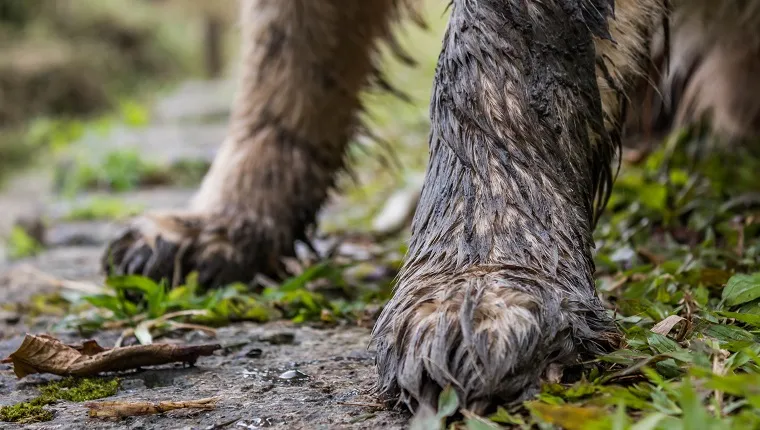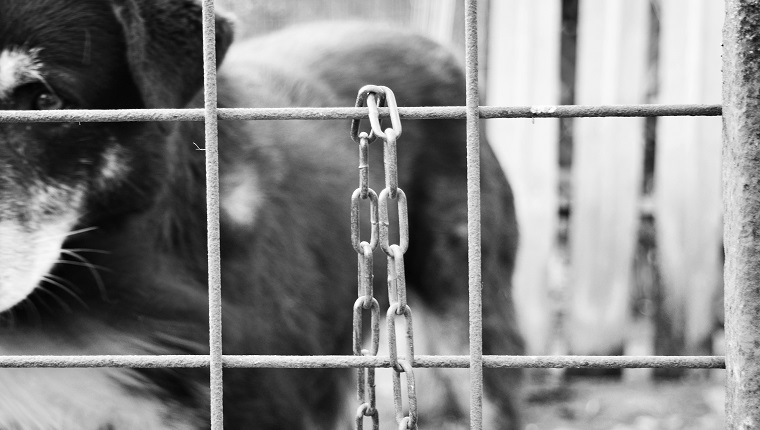Dog rescue videos can give us hope, encourage us to be active in the rescue community, and promote shelter and rescue groups that do great things for animals.
We love sharing them. On DogTime, we regularly feature videos from non-profit organizations that actually help dogs in need. Hope for Paws and Animal Aid Unlimited, for example, do such amazing work. We cannot thank them enough.
Of course, because we just can’t have nice things, fake rescue videos are starting to emerge across the internet. These videos, often clearly staged, show dogs in horrific situations, then–with sappy or suspenseful music playing–a hero steps forward to “save” these dogs.
The creators of these videos monetize them through advertisements, then prey on your empathy so you’ll share them, thus earning them more views and more money.
As dog lovers who want to do good in the community, we need to know the difference between the legit dog rescue videos and the fakes. Here’s what you should know about fake dog rescue videos.
What’s Going On With Fake Dog Rescue Videos?

A YouTuber whose channel goes by the name PaymoneyWubby recently brought attention to some clearly faked dog rescue videos on YouTube.
We won’t post his video here, as it’s full of strong language that might upset some readers. However, if you’re not offended by such language, you can click here to watch his video (NSFW).
In it, he calls attention to a YouTube channel called Amazing KM Daily. That channel featured what appeared to be videos of street dogs stuck in several horrible situations with cheesy music playing over it all. In almost every video, a child steps up to rescue the animal.
Someone clearly set these videos up, sometimes with full intros shot to set the scenes of how the children “randomly” came across the animal. They often featured what appeared to be the same dog getting stuck.
The animals were, at times, crying out in pain or fear. One video featured a puppy caught in a bike wheel. Another featured a pup tied to a rock and thrown in a mud pit. One featured a python actually attacking a dog. All of them appeared to be staged.
Since PaymoneyWubby posted his video, the Amazing KM Daily channel and it’s almost one million subscribers disappeared. However, there are still many, many, many fake dog rescue videos still on YouTube.
Why Are Fake Dog Rescue Videos Harmful?

Let’s start with the obvious. Someone who makes these videos is very clearly picking up street dogs and putting them in horrific situations.
I don’t need to tell you that setting up a dog to get attacked by a python is abusive to both the dog and the python who has to get hit and pried apart–possibly killed–during the “rescue.”
But the other reason these videos are harmful is that they rely on our empathy for promotion. If you’re anything like us at DogTime, you want to share rescue videos and promote the good that shelters and rescues do in the community.
These videos prey on that empathy.
Not only that; they make it harder for us to share legitimate rescue videos. Now we have to second guess every video we share. That makes it harder on the shelters and rescues who want to get the word out about their work.
So what should we do? Do we stop sharing rescue videos altogether?
No, we shouldn’t let these fakers ruin things for real dogs in need. But we do need to think more critically about what we choose to share. It’s a chore, and it adds a step to our days before we can just click “Share,” but it’s also important that we know what we’re promoting.
How To Tell If Dog Rescue Videos Are Fake

Before you click Share when you see a rescue video on YouTube, Facebook, or anywhere else, there are a few questions you should ask. These will help you think critically about what you’re sharing and who it benefits.
Here are some things to think about:
- Who made this video? If you can’t see a legitimate non-profit organization’s name attached to the video, then it’s probably best not to share. Again, Hope for Paws and Animal Aid Unlimited are legit organizations that share rescue videos, and we love them for it. They are real non-profits with real websites and ways to make tax-deductible donations.
- How did the rescuers arrive on the scene? In most real rescue videos, the rescuers will say they got a call from a concerned person and will show up with equipment specifically for a rescue. They do not tend to show up randomly with no leashes, nets, treats, or items to help them.
- Does it seem staged? If there’s an introduction where someone is just randomly filming a person showing up and being surprised by the dog in a scary situation, then the chances are good that the scene is set up. Any kind of intro that seems like it could be from a poorly-made television show and not a real rescue video should be a red flag.
- What are they doing with the dog? Does it seem like the rescuers are there to help? Do they get to work right away, or do they wait around to get good shots? Is the most competent person helping, or is it a child who doesn’t know what their doing? In legit rescue videos, the workers get to work almost right away, and they wouldn’t just stand around filming as a dog approaches a snake and gets attacked, for example.
- Does the video have a description? Chances are good that if a real rescue group shares their video, they will want to give you more information. They’ll almost always link to their site so you can donate.
- Is the rescuer a real non-profit organization? Real rescuers work for non-profit groups. If you go to their websites, they should say somewhere that they are a 501(c)(3) non-profit, which means they are a charitable organization and your donations are tax-deductible. It’s highly illegal to misrepresent yourself as a non-profit. It’s, unfortunately, not illegal to make fake dog rescue videos.
Asking these questions will help you tell which dog rescue videos are real or fake, but they aren’t perfect. Sometimes real rescue videos can have elements that seem staged, and fake ones can have scenes that seem real.
However, these questions will allow you to use your critical thinking skills and determine whether you should share or not.
How Can We Fight The Fake Dog Rescue Videos?

PaymoneyWubby, whether he intended to be or not, was clearly instrumental in shutting down the Amazing KM Daily channel. He used his platform to expose what they were doing.
You may not have as much influence as he does on your own, but you can sign petitions, report videos to YouTube or whatever site they appear on, and stop sharing fake dog rescue videos.
YouTube has already started banning fake rescue videos of dogs being attacked by snakes.
These efforts can help cut off the flow of money to the video creators. Once they see that it’s no longer profitable and they have significant trouble sharing their videos, they may stop making them.
Until then, think about what you’re sharing. Spread the word about fake dog rescue videos. Expose them when you can, and keep promoting the legitimate non-profit groups that actually do the work of saving dogs.









